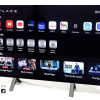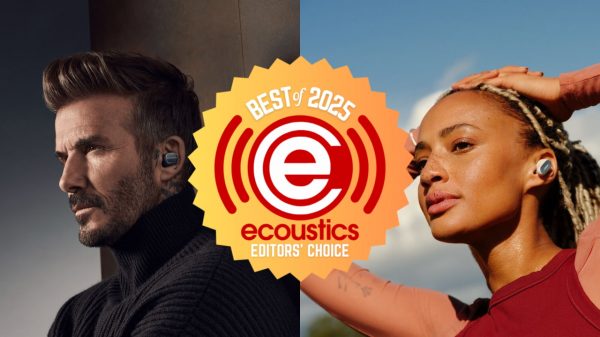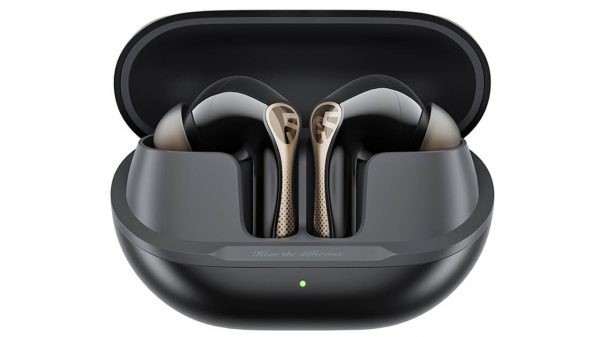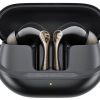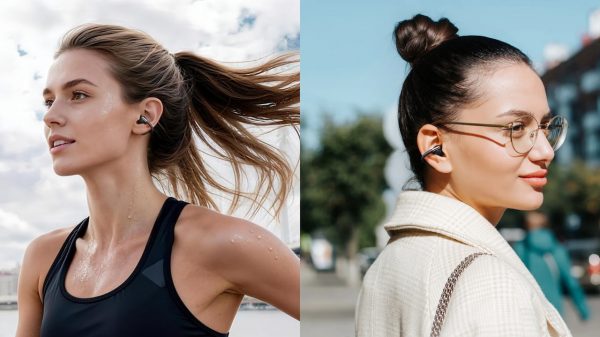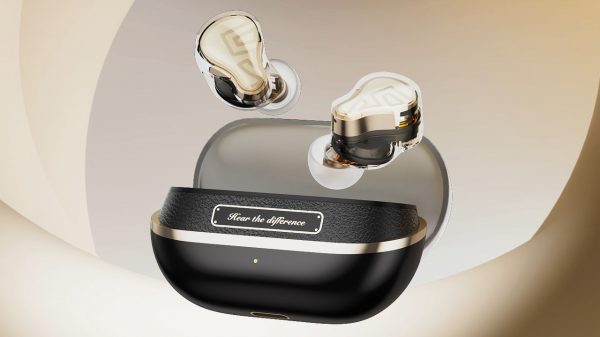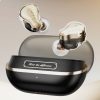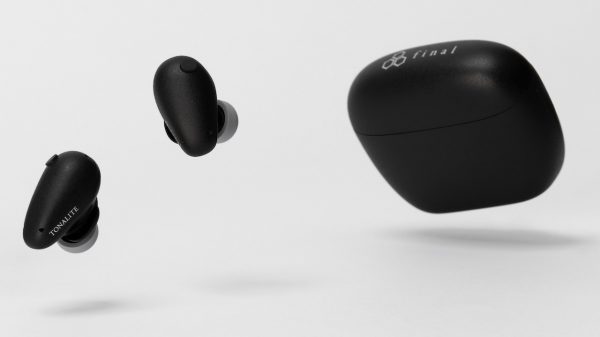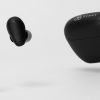Did the COVID-19 pandemic change your exercise routine? It had a huge impact on my daily regimen. Ice Hockey has been an integral part of my life since the 1970s and I’ve played goalie for a few decades. With no games, gyms, or open rinks — I had to improvise. Before anyone screams “1st World Problems,” I also suffer from bipolar disorder and exercise is a mandatory part of my life to maintain an even keel. I’m also very fortunate to live blocks from the Atlantic Ocean and miles of beaches. Running has never been my favorite form of exercise but it became my only form of exercise for the past 15 months. The Jaybird Vista 2 TWS were the right wireless earbuds at the right time.
“True Wireless Earbuds” is a marketing term that gets tossed around a lot in 2021 and I’m not sure how much meaning it has anymore. Are there “Quasi Wireless Earbuds” on the market as well?
Flipping through my headphone collection, I came to the realization that I own wireless earbuds from HiFiMan, 1More, and Sennheiser. The sad truth is that I reviewed all of them and put them away in my desk. None of them really worked for me running in the rain, fishing, or while doing daily errands.

Jaybird advises against getting the Jaybird Vista 2 wet with salt water but I’m going to let you know that as long as you don’t drop them in ocean (where you won’t find them), I was perfectly fine fishing with them 10 feet out in the Atlantic Ocean here in New Jersey in rainy weather. Just wipe them down and let them dry out. I’m 6’3″ and wear chest-high fishing waders with a waterproof pocket for my iPhone. It worked perfectly fine.
Don’t shower with them. It even mentions that in the instruction booklet which I found both funny and weird. Do people actually shower wearing wireless earbuds? I did submerge the Jaybird Vista 2 in my bathroom sink and after drying them and letting them sit for 10 minutes — they worked perfectly fine.
Vista vs. Vista 2
The first-generation Jaybird Vista were rather popular and sold for $150. The new earbuds sell for an additional $50 ($200) so you’re probably wondering what you get for the extra shekels with the Vista 2:
- Active noise cancellation (ANC) and transparency modes
- “Find my” function for each earbud and the charging case
- Wireless charging
- Longer battery life
- Wear sensors for music autopause
- Superior dust and water resistance
- AAC Bluetooth codec support
Running-oriented earbuds can often be oversized with big and cumbersome earhooks and even bigger charging cases that don’t fit shirt or pant pockets very well. Jaybird is to be commended for the rather minuscule charing case that I found to be much easier to schlep around than similar ones from HiFiMan or 1More.

Like a lot of people, I don’t love the feeling of earhooks or oddly shaped foam tips that need to be adjusted to create the perfect seal. The Jaybird Vista 2 feature eargels with integrated stabilizer fins that I found fit perfectly (Jaybird provides 5 different sizes) in my larger ear canals without irritating my Pinna.
Weight was a non-factor as I ran with them inserted each morning. I really only noticed them when I pulled them out and reinserted them into the charging case.
The aforementioned class-leading durability and waterproof construction is very effective in the elements. I ran with them in the rain (both torrential and brief showers) and along the beach in winds that some would deem unnatural.
Jaybird designed the Vista 2 to meet the MIL-STD-810 standard for environmental durability, and now feature an IP68 rating for total dust and water protection. The charging case is IP54 rated.
I’m headed to Israel in November where I will be hiking in both the Negev and Golan Heights and I plan on trying the Jaybird Vista 2 in conditions that will be both quite sandy and moderate around Sderot and snowy on Mt. Hermon. I will be putting these to the test and plan on updating this review in Q4 2021.

The charging case contacts are corrosion resistant and the case can now be charged wirelessly.
One of the more interesting features of the Vista 2 is the woven fabric that now covers the outer portion of the earbuds. Jaybird’s marketing literature calls it “WindDefense” fabric and it’s designed to act as a wind sock, preventing wind and other outside noises from interfering with the microphones, music, and phone call quality.
Under that fabric, you will find a single physical button that can be used to trigger the usual actions like controlling playback, track selection, — but now each earbud also has an embedded accelerometer sensor for tap controls.
Battery Life

The Vista 2 claim eight hours per earbud on a full charge and 16 hours in the case. Fast charging remains the same: Five minutes will get you an extra hour of playing time.
With volume set to 50% and the ANC turned on, my pair of Vista 2 earbuds stopped playing after 5 hours and 48 minutes. When I turned off the ANC, the battery lasted 7 hours and 52 minutes according to the stopwatch on my iPhone.
I can’t speak for any other users but I barely use wireless earbuds for more than 1 hour each day unless I fish for longer periods of time so I found the battery life to be quite excellent.
Operation and Sound Quality

The hidden buttons underneath the woven fabric operate with a satisfying degree of feedback and the free Jaybird app lets you pick specific functions for each click sequence on each earbud.
The click-and-hold feature on the earbuds to adjust the volume is not very precise and you’re far better served using the volume control on the app. I started to wonder if my fingers were too large or that I was doing it incorrectly but it’s not a deal breaker because the app is so well designed.
I’m not a huge phone call/earbud person but I know that a lot of people are. I live in a neighborhood filled with Apple AirPods Pro users and I see people sitting in cafes all the time having phone conversations while wearing them.
With a normal level of external noise, the Vista 2 are perfectly fine for taking phone calls. I also liked the ability to shift between ANC, SurroundSense Transparency mode, and normal listening.

My only major area of concern with the Vista 2 is how it deals with a lot of outside noise (wind) and phone calls. I was hopeful that the SurroundSense Transparency mode which allows you to adjust how much exterior noise should be let in, and the degree to which it should attempt to compensate for wind noise (low, medium, or high) would make phone calls along the beach as I fished more audible and my voice more intelligible.
In practice, that was hardly the case. I turned ANC on/off multiple times during phone calls and ended up preferring calls in areas of higher noise with the ANC turned off. The WindDefense fabric works fine in normal conditions but I think it’s a bit of a miss at the end of the day.
The passive noise cancellation of the Vista 2, however, is excellent and I found that it allowed me to tune out the noise on the beach surrounded by hundreds of tourists rather well.
But how about music?
Over the years, I’ve discovered that I prefer headphone listening at lower levels than I did when I was a teenager. Headphones are more transparent sounding in 2021 and they deliver a lot more detail. I really don’t need to damage my hearing at this point in my life.

The Jaybird Vista 2 have a definite sonic signature that is somewhat restrained sounding fresh out of the box. There is a balance to the overall presentation that will offend no one and that’s perfectly fine for most people. The Jaybird app is excellent and I loved the ability to turn off the default EQ and set my own levels with the Signature mode. Boosting or reducing the bass, midrange, and treble is very easy and you can save your profile.
The “find my buds” mode is a great feature. I’ve used it twice so far and while the sound is somewhat irritating, it’s rather easy to locate as a result.
Once I created my own Signature setting, I drove the Vista 2 with a variety of jazz, blues, EDM, classical, and classic rock.
The midrange in default mode is a tad too laid back sounding for my tastes but I only needed to boost it a small margin to add some presence to Sarah Vaughan, St. Vincent, Janis Joplin, and Tori Amos. The top end doesn’t have the airiness of the best planar magnetic or studio-level headphones, but it’s perfectly fine with most modern pop and rock recordings; it’s never strident sounding at higher levels and I rather enjoyed the clarity and sense of detail.
Bass response is not a weakness at all. The Vista 2 can deliver rather potent low end response but it’s not the last word in definition; my ears care more about tautness and texture versus skull crushing energy at this point in my life.
None of the wireless earbuds that I’ve tried can deliver the state-of-the-art midrange resolution, imaging, and deep soundstage of the best planar magnetic headphones in my collection, but they also offer a very different value proposition and are designed for people who commute or run/exercise and want the ability to take phone calls.
Conclusion
The competition in the true wireless earbuds category is very steep; Sony, Bose, Apple, and Sennheiser offer very compelling options that tick off most of the boxes that consumers care about.
The Jaybird Vista 2 must be considered in that top tier with the companies listed above. I would take the Vista 2 over any Apple wireless earbud without hesitation and I’ve only had a brief encounter so far with the new Sony WF-1000XM4 Wireless Earbuds.
Minus the disappointing call quality in higher noise areas, the Vista 2 exceeded all of my expectations and have become my daily running wireless earbuds for the long-term. Between the durability, weight, sound quality, and affordability — it’s almost impossible to not be impressed by these.
For more information: $199 at Jaybird.com






